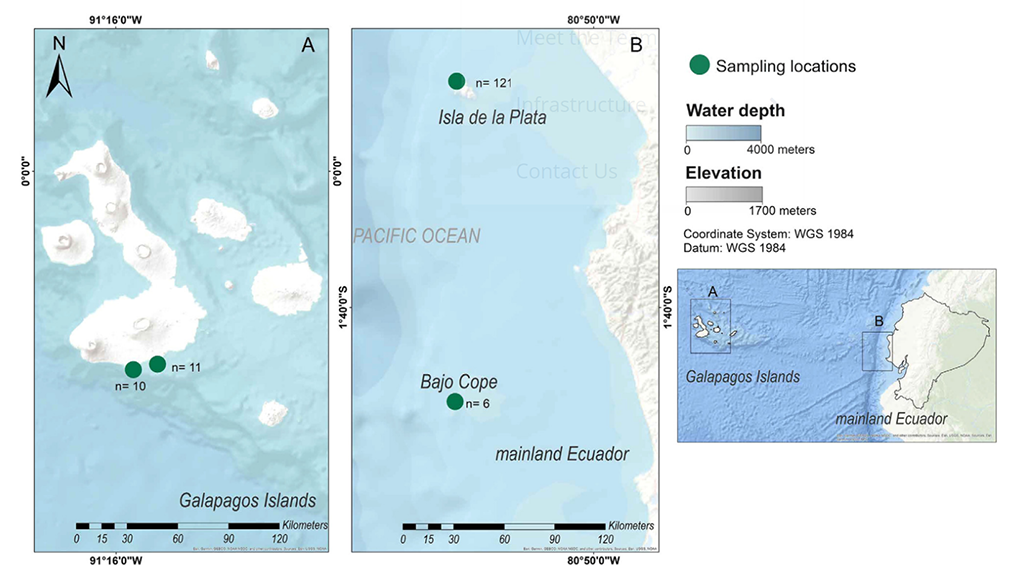Resumen
La manta gigante (Mobula birostris) es la especie de raya más grande del mundo. Se sabe poco sobre su composición genética en sitios clave de agregación como las Islas Galápagos e Isla de la Plata, cerca de la provincia de Manabí en la parte continental de Ecuador. Este estudio tuvo como objetivo determinar la diversidad genética y la estructura poblacional de M. birostris en estas 2 ubicaciones para comprender mejor su conectividad y distribución en las aguas oceánicas ecuatorianas y ayudar en su conservación y manejo adecuado. Se recolectaron y analizaron un total de 127 muestras de la parte continental de Ecuador (2013-2018) y 21 muestras de Galápagos (2019) utilizando 8 loci microsatélites. Los resultados mostraron un nivel moderadamente alto de diversidad genética para las mantas gigantes de ambos sitios (He = 0,72 para la parte continental de Ecuador y He = 0,66 para Galápagos). El análisis de la estructura poblacional sugiere la presencia de 2 poblaciones diferentes en Galápagos y en la parte continental de Ecuador. Las diferentes composiciones genéticas encontradas para cada ubicación podrían estar asociadas con el comportamiento residente observado, vinculado a la formación de sistemas de surgencia causados por corrientes oceánicas que llevan aguas ricas en nutrientes a ambos sitios durante todo el año. Nuestro análisis de conectividad genética confirmó un bajo flujo génico entre estas 2 ubicaciones, lo que rechaza aún más la hipótesis de una sola población panmítica de M. birostris en Ecuador. En conjunto, estos resultados proporcionan información valiosa sobre la composición y diversidad genética de la manta gigante, una especie en peligro de extinción que ha sido escasamente estudiada en el Pacífico Tropical Oriental.
Obtenga más información sobre el estudio en el enlace.






